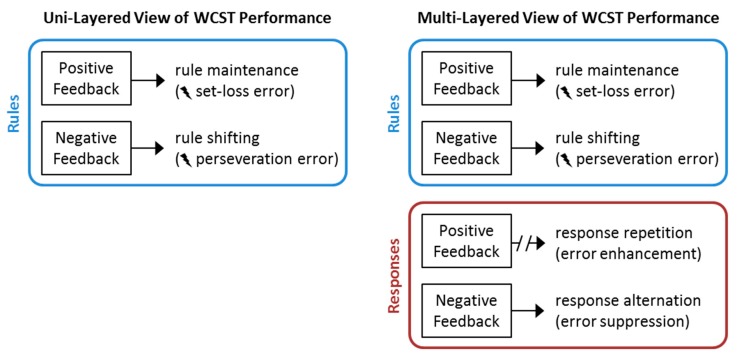Figure 4.
Summary of the factors that contribute to WCST performance. The traditional view of WCST performance considers a uni-layered structure governing task performance, such that positive feedback elicits rule maintenance and negative feedback elicits rule shifting. Failures of these cognitive processes are indicated by the occurrence of set-loss and perseveration errors, respectively. The extended view that emerges from this study suggests that a multi-layered structure governs WCST performance. Due to the multi-layered structure, the reception of feedback is associated with a credit assignment problem (e.g., [57]). Our findings suggest that negative feedback is associated with a modulation of the frequency of perseverations errors via response demands (observable as an error suppression effect). However, a modulation of the frequency of set-loss errors in response to positive feedback (i.e., an error enhancement effect) could not be discerned in the present study (as indicated by the broken arrow).

